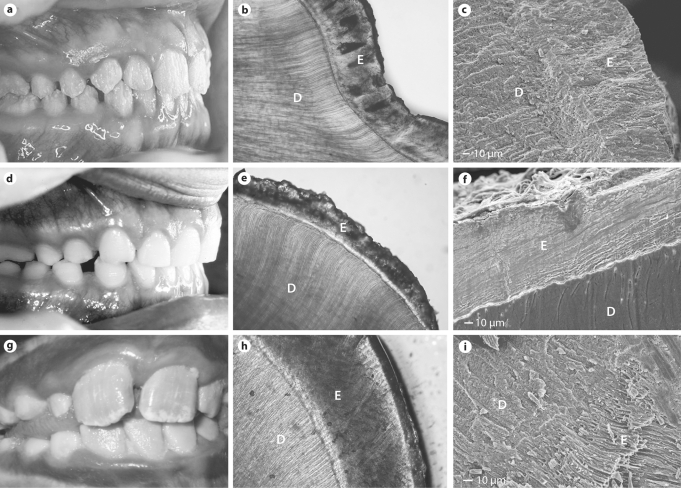Fig. 1.
Highly diverse clinical appearances of the human dentition result from AMELX g.4046delC (a, female dentition), ENAM g.8344delG (d) and KLK4 g.2142G>A mutations (g). The dentin (D) appears normal, while the enamel (E) affected by these different mutations shows varying degrees of opacity and hypoplasia as seen with light microscopy (b, AMELX;e, ENAM;h, KLK4). These different mutations also have markedly different effects that frequently disrupt the normal prismatic structure in the AMELX (c) and ENAM (f) enamel but not in the KLK4 AI enamel (i) as seen with scanning electron microscopy.

